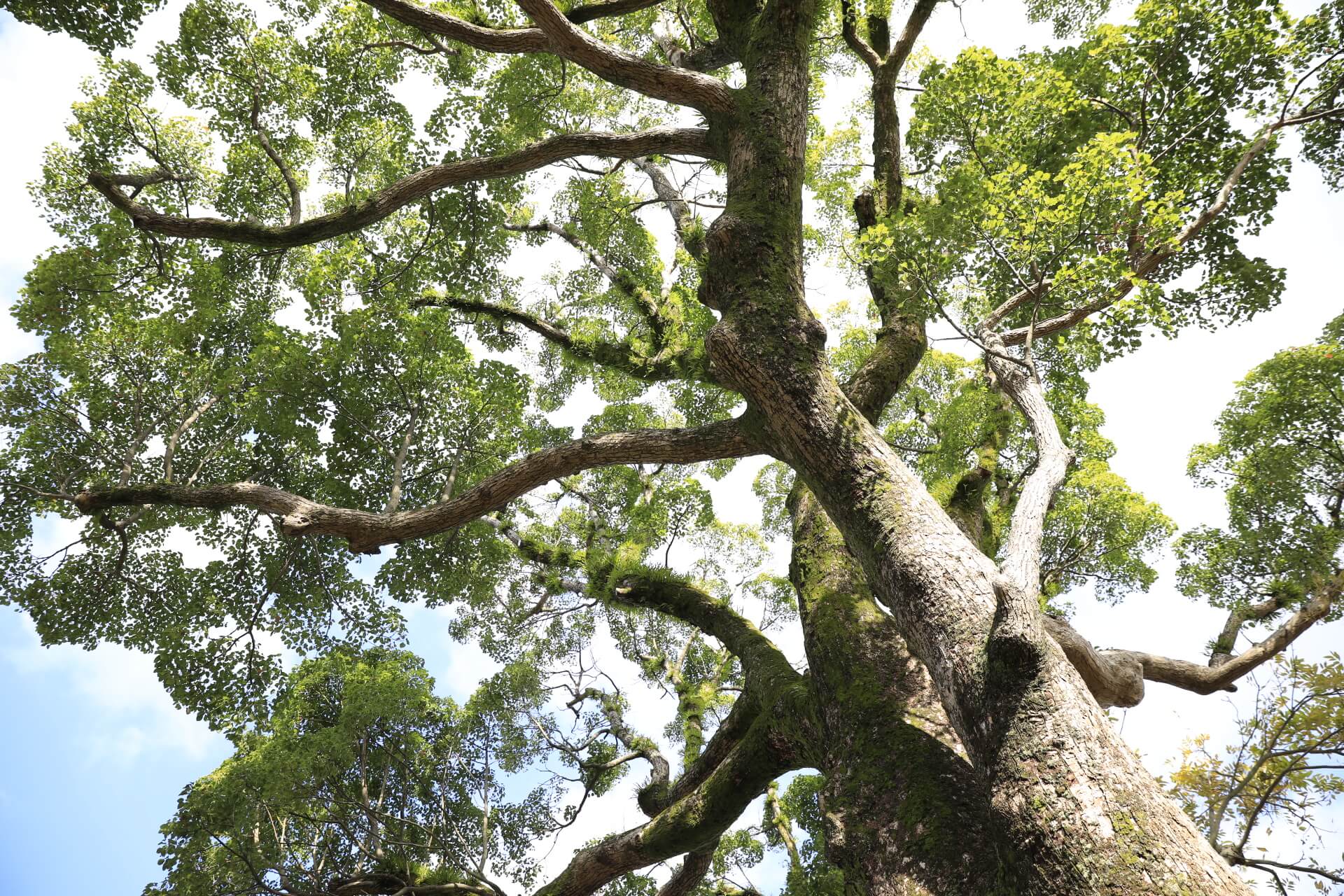



Tree data
Variety
Kusunoki (camphor, Cinnamomum camphora)
Height
Around 18m
Circumference
5.5m at chest height
Owner
Fuchi Shinto Shrine
There was in Japan a religious style consisting of a syncretism of the Shinto and Buddhist religions, in which the Shintoism dating back to the ancient days was respected while the qualities of the later-emerging Buddhism were also incorporated. Fuchi Shinto Shrine was originally the Buddhist Manpukuji Temple, where the Buddhist goddess Benten was enshrined. In those days, Benten was the object of profound faith as the divine protector of Fuchi Village. Elsewhere, the woodblock print entitled Nagasaki, Mount Inasa, in Utagawa Hiroshige's series of prints Rokuju-yoshu Meisho Zue (Famous Views of the Sixty-odd Provinces) depicts the Torii arch to Manpukuji Temple jutting out of the sea, and the landscape centering on Mt. Inasa was from the early days of the Edo period regarded as highly scenic. When Japan entered the Meiji period Shintoism and Buddhism were separated, the temple became a sonsha (village shrine) called Fuchi Shinto Shrine
The precincts of Fuchi Shinto Shrine contain unique shrines such as a shrine dedicated to Kuwa Hime, the Christian daughter of Otomo Sorin, who built up a powerful following centered on Oita Prefecture during the Warring States period (1467-1615), and six Chinese zodiac shrines each representing two years (such as ne and ushi (rat and ox) and uma and hitsuji (horse and sheep) and so on). The Nagasaki Ropeway's Fuchi Jinja Station is situated adjacent to the shrine and has become one of the spots for enjoying a panorama of Nagasaki's scenery along the route to Inasayama Park.
The camphor tree at Fuchi Shinto Shrine is located on the north side of the precincts, around 1.7km SSW from the hypocenter. The main building of the shrine collapsed when it was hit by the blast waves of the atomic bomb, and most of the trees that surrounded the shrine keeled over with their branches and leaves left smoldering. The Torii arch and ishidoro stone lantern were also damaged by the bombing, but the main building was restored immediately after the war, and the present Haiden (hall of worship) was reconstructed in 1960.
With the progress of research into the bombed trees progressing in recent years it has become clear that the following irregularities in their shape can be observed: 1) burns or withering due to heat rays or the burning of nearby buildings; 2) swelling and root growth on the opposite side of the damaged trunk; 3) hollows caused by tissue death; 4) multi-stemming from the roots due to destruction by fire of parts above ground after the bombing, and 5) slanting of the trunk.
The study of this particular tree yielded pioneering results in the course of the research into the bombed trees of Nagasaki. When 3D measurements of the tree using a laser were made, it was discovered that while the part of the trunk on the opposite side of the hypocenter was swelling and its roots extending, on the side facing the hypocenter the bark was withering and the trunk slanting towards the direction of the hypocenter. The results of the research on this tree will doubtless play a leading role in studies of the other bombed trees in Nagasaki.
The camphor tree at Fuchi Shinto Shrine is not only a tree symbolizing the heart and soul of the people in the community who have uninterruptedly lived here since the Edo period; it also shows us the robust continuation of life despite the damage of the atomic bombing.